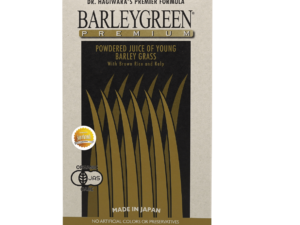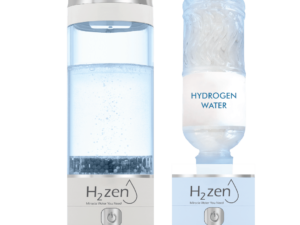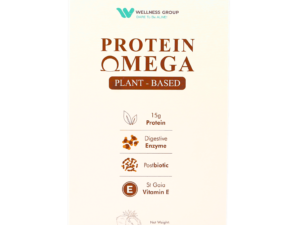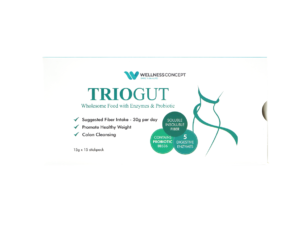Surprising fact: recent human and animal studies report measurable antioxidant signals from molecular hydrogen in solutions used as daily drinking water, sparking real interest across Malaysia.
This short guide explains what “hydrogen water benefits proven” means today. It sets clear expectations on where evidence is strong, where it is emerging, and where more trials are needed.
The article introduces hydrogen-rich water as regular water infused with molecular gas under pressure to make a supersaturated solution. Scientists study its antioxidant and anti-inflammatory effects in lab settings and small human trials.
Readers will learn how to read claims responsibly, why concentration and stability matter in Malaysia’s climate, and which study measures—like BAP and 8‑OHdG—ground the discussion.
Wellness Group Malaysia offers local support and product advice. Contact via WhatsApp at +60123822655 during business hours: Mon–Fri 9:30 am–6:30 pm; Sat–Sun 10 am–5 pm.
Key Takeaways
- This article outlines where evidence for hydrogen-rich water is solid, limited, or inconclusive.
- It explains how the solution is made and why concentration matters.
- Readers get tools to spot preliminary findings versus well-powered trials.
- Health areas covered later include exercise, cardiometabolic markers, and mental well‑being.
- Wellness Group Malaysia can advise on devices and safe routines via WhatsApp.
Understanding User Intent: What people mean by “hydrogen water benefits proven” today
When readers search “hydrogen water benefits proven,” they usually want human clinical data, not animal models or cell assays. Clear, repeatable results are the aim.
Scientific proof builds in steps: small pilot trials, randomized studies, then larger, well-controlled trials that improve confidence. This article highlights how readers should judge each step.
Focus on measurable outcomes such as antioxidant capacity (BAP), DNA damage markers like 8‑OHdG, lipid panels, and PBMC apoptosis. Look for consistent mechanisms and a favourable safety profile.
“Improved markers do not always mean lower long‑term disease risk; longer follow‑up is essential.”
Key study details matter: sample size, blinding, control beverages, duration in weeks, and gas concentration. Ask vendors in Malaysia for independent test data on concentration and freshness to avoid disappointment.
- Consult clinicians for diabetes, heart disease, or pregnancy before changing routines.
- For local testing or product advice, message Wellness Group on WhatsApp at +60123822655.
Hydrogen water 101: What it is, how it’s made, and why molecular hydrogen matters
This part breaks down common production methods and the science behind keeping dissolved gas at useful levels.
What it is: Regular water enriched with molecular hydrogen (H2). The tiny gas dissolves under pressure and can remain long enough for practical drinking use when handled correctly.
Production methods
- Countertop generators: make fresh batches at home for daily use.
- Portable infusion machines: suited for travel and office use.
- Tablets: convenient on-the-go; results depend on base water and seal of the bottle.
- Ionizers: may change pH while adding dissolved gas; users should compare outputs.
Concentration and stability
Consumer formats often target about 1.0–1.6 ppm; canned products commonly list 1.2–1.4 ppm at production. Pressure dissolution helps reach these levels.
H2 diffuses out over time. Chill sealed containers, open just before drinking, and avoid agitation to keep concentration. Aluminum cans and multilayer pouches retain gas better than standard plastic.
Need local advice? For device selection and testing in Malaysia, message Wellness Group on WhatsApp at +60123822655 during business hours.
How hydrogen-rich water may work: mechanisms behind antioxidant and anti-inflammatory effects
Lab and human data point to specific molecular actions that could explain observed antioxidant effects.
Selective hydroxyl radical scavenging and lipid protection
Oxidative stress happens when reactive oxygen species outpace defenses and harm lipids, proteins, and DNA.
In vitro and animal studies show selective scavenging of hydroxyl radicals, which cuts lipid peroxidation in Fenton reaction models.
Modulating NF-κB, TLR signaling, and cytokines
Human transcriptomic data report downregulation of NFKB1, MYD88 and several TLR genes. This aligns with lower IL1B, IL8 and related pro‑inflammatory signals.
Anti-apoptotic and cytoprotective pathways
Randomized trials found reduced PBMC apoptosis after daily intake, suggesting cytoprotective effects under routine oxidative pressures.
| Mechanism | Key Evidence | Practical relevance |
|---|---|---|
| Hydroxyl radical scavenging | Fenton model inhibition (animal/in vitro) | May lower lipid damage |
| NF‑κB / TLR downregulation | Human transcriptomics (healthy adults) | Reduced pro‑inflammatory signaling |
| Anti‑apoptotic effects | Reduced PBMC apoptosis in RCTs | Potential cytoprotection |
Note: The small size and diffusibility of molecular hydrogen likely explain rapid cellular access, but full pathways remain under study. For local guidance on product choice and testing, see the hydrogen-rich water guide.
Evidence snapshot at present: what human studies and systematic reviews actually show
Clinical summaries to date show a cluster of small human trials and a handful of systematic reviews that map where evidence is stronger or still exploratory.
Scope: A recent review screened about 25–30 human studies. Many are randomized, double‑blind, placebo‑controlled trials comparing enriched water to plain water for several weeks.
Study design and typical endpoints
Trials commonly run 2–10 weeks with daily intakes such as 1.5 L/day for 4 weeks. Typical endpoints include antioxidant capacity (BAP), DNA damage (8‑OHdG), lipid panels, fasting glucose and A1c, inflammatory cytokines, and endothelial function (RHI).
| Design | Common endpoints | Duration |
|---|---|---|
| Randomized, double‑blind | BAP, 8‑OHdG, lipids | 2–10 weeks |
| Placebo‑controlled | Glucose, A1c, inflammation | 4 weeks typical |
| Pilot study | Endothelial function, gene expression | Short term |
Most trials have small sample size and sometimes pilot designs. Authors note that placebo effects and changes in total water intake can influence some markers.
“Encouraging signals exist, but larger, multicenter trials are needed to confirm consistency across ages, sexes, and health groups.”
Bottom line: results show promising signals and a good short‑term safety profile, yet findings remain preliminary. This article urges cautious optimism and more rigorous, larger studies in Malaysia and beyond.
Hydrogen water benefits proven
Randomized human trials report measurable changes in lab markers after set dosing periods. These include higher antioxidant capacity (BAP) in adults aged 30+ after 1.5 L/day for four weeks.
Key results include reduced PBMC apoptosis, lowered expression of NF‑κB/TLR inflammatory genes, and a ~25% rise in endothelial reactive hyperemia index over two weeks.
Cardiometabolic signals also appear in selected cohorts: some trials show lower LDL‑C and apoB, and metabolic syndrome studies report improved A1c, fasting glucose, and waist‑to‑hip measures with higher doses.
| Outcome | Typical change | Study context |
|---|---|---|
| Antioxidant capacity (BAP) | Increase after 4 weeks | Adults ≥30, 1.5 L/day |
| PBMC apoptosis | Reduced rates | Randomized trials, short term |
| Endothelial RHI | ~25% improvement | 2-week intervention |
| Lipid and metabolic markers | LDL‑C/apoB reductions; improved A1c | Selected cohorts, higher dose studies |
What “proven” means here: specific, controlled human findings over weeks. This does not equate to disease cure or prevention. Effects vary by age, baseline status, and dose.
“Larger, longer trials are needed to confirm consistency across populations.”
For personalized guidance and product selection in Malaysia, message Wellness Group on WhatsApp at +60123822655 during business hours or see this dosing and testing guide.
Exercise, endurance, and recovery: mixed but promising findings
Sport trials examine whether a short pre-session dose alters fatigue, lactate accumulation, and breathing efficiency during high-intensity efforts.
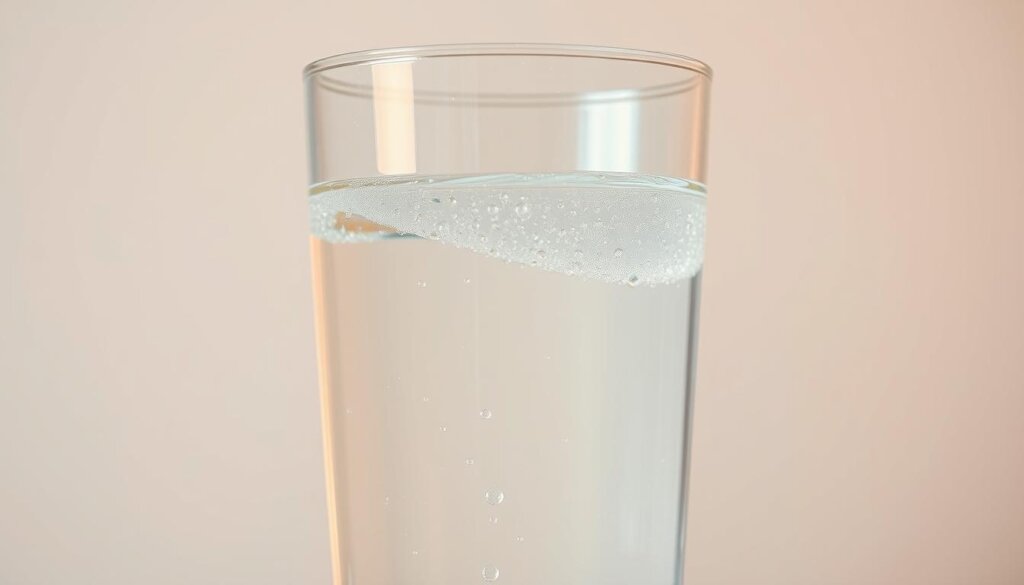
Timing matters: many protocols give a drink 15–30 minutes before exercise to test acute effects on lactic acid and ventilatory efficiency.
Fatigue, lactic acid, and ventilatory efficiency in athletes
Some trials report lower post-exercise lactate and better ventilatory efficiency at higher intensities. These effects appear most clear in protocols targeting intense intervals.
When results vary: training status and performance differences
A 7-day nano-bubble trial found trained cyclists gained more anaerobic power than untrained groups. Yet a double-blind crossover study showed mixed results: slower runners improved slightly while the fastest saw no gain or small declines.
Mechanistically, reduced exercise-induced oxidative stress could aid recovery and late-stage sprints. Athletes are advised to trial consumption in structured blocks (1–2 weeks) and track RPE, HR, lactate, and split times.
- Control hydration, carbs, and sleep—these confound performance.
- Verify concentration and freshness to ensure intended dose.
- Consult coaches or sports dietitians before integrating into periodized plans.
Oxidative stress and inflammation: the core rationale
Cells face routine oxidative challenges that, over time, influence inflammation, recovery, and molecular damage.
Everyday factors such as exercise, pollution, and metabolic load raise oxidative stress and can strain the body’s antioxidant systems.
Antioxidant capacity, 8‑OHdG DNA damage, and PBMC apoptosis
Key human findings show that four weeks of 1.5 L/day intake increased BAP, a marker of systemic antioxidant capacity, especially in adults aged 30+.
Trials reported reduced 8‑OHdG, a DNA oxidation marker, with larger declines in the hydrogen arm across studies.
Researchers also found lower PBMC apoptosis and fewer circulating CD14+ monocytes, consistent with reduced cellular stress and inflammation signaling.
“Transcriptomic data align with functional markers, showing downregulation of NF‑κB and TLR pathways.”
- These changes support recovery and cellular housekeeping rather than disease cure.
- Monitor subjective energy, DOMS, and, if possible, periodic lab checks under clinician guidance.
- Note: plain hydration can shift some markers; well‑controlled trials help isolate true hydrogen effects.
Safety note: Short trials report low risk, so a supervised trial is reasonable for many adults in Malaysia.
Cardiometabolic health: cholesterol, blood glucose, and potential metabolic syndrome
Recent trials link daily intake to measurable shifts in cholesterol and glucose markers over several weeks. Small cohorts show lower total cholesterol and LDL‑C, plus better HDL function after consistent dosing.
HDL, LDL‑C, apoB and A1c
One 10‑week study in 20 adults reported falls in total cholesterol and LDL‑C, especially among smokers. An 8‑week trial (1.5–2 L/day) raised HDL by about 8% while boosting SOD levels and cutting urinary TBARS.
Nrf2, endothelial function and body measures
A randomized trial in people with metabolic syndrome found lower fasting glucose, reduced A1c, improved inflammatory markers, and modest waist‑to‑hip and BMI drops.
| Endpoint | Typical change | Context |
|---|---|---|
| Total cholesterol / LDL‑C | Decrease (stronger in smokers) | 10 weeks, small cohort |
| SOD / TBARS | SOD +39%, TBARS −43% | 8 weeks, 1.5–2 L/day |
| HDL function / apoB | HDL +8%, apoB reductions | Selected cohorts, weeks |
| Glucose / A1c | Lower A1c; modest fasting changes | Metabolic syndrome, randomized trial |
| Endothelial RHI | ~25% improvement | 2-week intervention |
How to use these findings: the shifts align with reduced oxidative stress and Nrf2 pathway engagement and suggest vascular benefits when paired with diet and activity. Malaysians with cardiometabolic concerns should discuss this approach with their clinician and track lipids and A1c over 8–12 weeks to assess personal response.
“Sustained routines and verified concentration help mirror study conditions and improve interpretability.”
Liver function and NAFLD: from hepatitis B to fatty liver markers
Trials in chronic hepatitis B and NAFLD tested consistent daily dosing and tracked enzyme and viral load changes.
In one controlled trial, patients with chronic hepatitis B consumed 1,200–1,800 mL/day of enriched water and showed improved liver function tests and reduced HBV DNA alongside lower markers of oxidative stress. Randomized, double‑blind studies in NAFLD likewise reported favorable shifts in liver-related markers after daily intake.
Mechanistically, antioxidant and anti‑inflammatory activity offer plausible routes for these effects, though sample sizes are modest. This makes the approach interesting but still adjunctive rather than a stand-alone therapy for liver diseases.
- Continue core lifestyle steps: weight loss, reduce alcohol, and balanced nutrition.
- Monitor ALT, AST and GGT and use imaging when advised.
- Discuss possible medication interactions with a clinician before starting.
| Condition | Dose | Reported change |
|---|---|---|
| Chronic hepatitis B | 1.2–1.8 L/day | Lower HBV DNA; improved enzymes |
| NAFLD | Daily intake (RCT) | Improved liver markers; reduced inflammation |
| General notes | Consistent intake | Adjunctive use; verify product quality |
Next step: patients with liver concerns should consult their physician and verify product quality and dosing consistency. For local product advice, contact Wellness Group Malaysia via WhatsApp at +60123822655.
Renal health and dialysis: electrolyzed hydrogen water during hemodialysis
Dialysis sessions expose blood to oxidative stress that can worsen fatigue and disrupt toxin clearance. Researchers have tested electrolyzed, hydrogen-enriched dialysate as an adjunctive approach to lower that burden.
Clinical signals: small clinical study results showed improved blood urea nitrogen (BUN) and reduced oxidative markers when enriched dialysate was used during hemodialysis.
Patient experience also improved. Dialysis patients reported less fatigue both on treatment days and on off days after several weeks of consistent use.
- Electrolytic systems enrich dialysate by dissolving molecular gas; investigators attribute the redox effects mainly to that agent.
- Safety checks and nephrologist oversight are essential before changing dialysis protocols.
- Centers should assess feasibility, monitoring plans, and intradialytic blood pressure when trialing this therapy.
Practical note: these findings suggest supportive, not curative, effects in chronic kidney diseases. Patients should discuss timing of medications and any protocol changes with their care team.
For consumer guidance between sessions, Wellness Group Malaysia can help explain devices and testing if a clinician approves trial use.
Mental health and stress: mood, anxiety, and inflammatory cytokines
Mental health research increasingly links mood and anxiety to low‑grade systemic inflammation and oxidative stress.
One randomized four‑week study reported improved mood and lower anxiety scores after daily intake. Another controlled trial in women with panic disorder used 1,500 mL/day for 12 weeks. Symptom scores did not differ from placebo, but pro‑inflammatory cytokines in blood — IL‑6, IL‑1β, IL‑12 and TNF‑α — fell significantly.
What this means: biological results can appear even when clinical scales stay similar. Reduced inflammation may support physical health and recovery from stress, but psychological therapy remains primary.
| Finding | Observed change | Practical note |
|---|---|---|
| Mood and anxiety | Improved scores after 4 weeks | Promising; needs larger replication |
| Cytokine profiles | IL‑6, IL‑1β, IL‑12, TNF‑α reduced after 12 weeks | May reflect lower systemic inflammation |
| Clinical use | Adjunctive support | Combine with therapy; verify product concentration |
Recommendation: consider a supervised trial of several weeks, track subjective stress, sleep, and energy, and consult a clinician—especially if taking psychotropic medication.
“Biological shifts may precede or accompany symptom change; combined care improves outcomes.”
Cancer care context: adjunctive therapy signals and what remains unproven
Early lab and small clinical work suggests that adding an enriched drinking regimen to standard oncology may ease side effects and support quality of life.
Preclinical models in colorectal cancer reported that combining the drink with 5‑FU improved tumor metrics and reduced fibrosis. A large review screened 677 articles and narrowed results to 27 that showed potential for better treatment tolerance and symptom control.
Mechanistically, modulation of oxidative stress offers a plausible explanation for observed effects. Still, direct anti‑tumor activity in humans is not established and remains hypothesis‑generating.
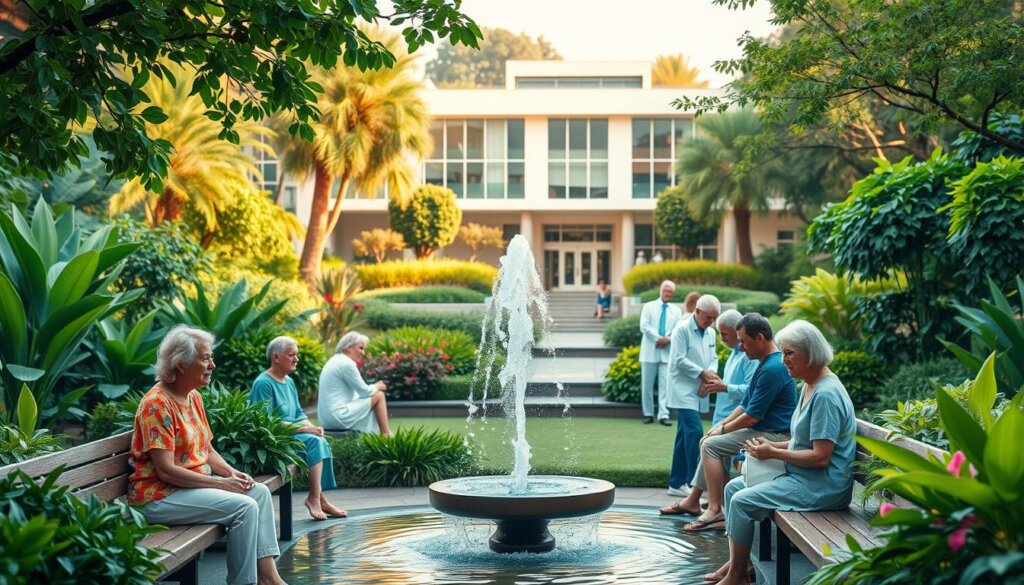
Patients should view this as supportive, not a replacement for proven cancer therapy. Coordination with oncology teams is essential before introducing any adjunct.
“Document symptom trends and share them with clinicians to help evaluate any adjunctive approach.”
- Prioritize therapies with survival evidence.
- Focus on hydration, nutrition, and rest as core supportive care.
- Well‑designed human trials are needed to define responders and confirm safety.
Respiratory and environmental burdens: particulate matter clearance and lung protection
Urban air quality in Malaysia raises concern about long-term lung strain. Animal studies test whether a pressurized, gas-infused drinking regimen can ease that burden.
Key animal findings show that daily intake of enriched water at about 1.2–1.4 ppm for several weeks enhanced clearance of carbon nanoparticles from lungs and reduced pneumoconiosis-like lesions.
Phagocytes, eosinophils, and blood markers
Researchers reported a 3.5–6.7× rise in phagocytic index for blood macrophages, which aligned with faster particle removal from circulation.
Eosinophil counts fell and platelet profiles improved compared with particle-only exposure groups. These hematologic shifts suggest better cellular cleanup after inhalation events.
Antioxidant mechanisms and practical notes
In Fenton reaction tests, the drink inhibited lipid peroxidation, supporting an antioxidant route that may protect lung tissue when oxygen radicals increase.
Preparation matters: pressurized infusion to ~1.2–1.4 ppm was used in the study results. Individuals with high exposure may consider this approach alongside masks and filtration, not as a sole defense.
Caution: these are animal studies; human trials are needed before clinical claims. People with asthma, COPD, or pneumoconiosis should seek medical advice and verify product freshness in hot climates to maintain effective concentrations.
Infectious disease angle: what COVID-19-era studies suggest about H2
Researchers explored inhaled and enriched-drink approaches during the pandemic to see if the agent could ease inflammation and breathing strain.
Context: small clinical studies and case reports tested inhalation therapy and enriched drinking regimens in patients with mild to moderate COVID-19. Some early reports described faster symptom relief and lowered pro‑inflammatory cytokines.
Reported results included reduced cytokine cascade markers and improved inhalation resistance in short-term settings. These findings suggest antioxidant and anti‑inflammatory effects may persist beyond rapid gas clearance, but evidence is limited.
Important distinctions matter. Inhalation is a clinical procedure needing supervision. Drinking protocols are more practical for home use, but they vary by product quality and concentration. Safety and routine matter in convalescence.
| Approach | Reported change | Practical note |
|---|---|---|
| Inhalation therapy | Lowered cytokines; improved breathing | Clinical setting; monitor oxygen and vitals |
| Oral enriched drink | Symptom relief; reduced inflammatory markers | Accessible; verify concentration and freshness |
| Post-viral recovery | Possible reduced oxidative stress | Adjunctive support; pair with rehab and rest |
| Public health | No replacement for vaccines/antivirals | Maintain masks, hygiene, and medical care |
“These are early, hypothesis-generating findings that complement—not replace—standard infection care.”
Practical guidance: people in Malaysia who consider trying an enriched drink during recovery should consult a clinician first. Confirm product testing, keep servings consistent, and prioritize vaccination and antiviral therapy when indicated.
Research note: ongoing trials will clarify protocols, target groups, and measurable outcomes. For now, this remains a cautious option for adjunctive support, not a standalone therapy.
Safety profile, intake, and practical use: how to drink hydrogen water wisely
A simple plan helps readers test daily routines safely. Trials often used around 1.5 L/day over 2–10 weeks, so modest, measured steps make sense for most adults.
Daily ranges, trial length, and timing with exercise
Common study ranges sit between 1.0–1.5 L/day, split into servings to keep freshness. Try a 2–8 weeks trial to judge energy, recovery, or lab markers.
For performance, drink a portion 15–30 minutes before exercise and space the rest across the day for steady exposure.
Who should check with a clinician first and interaction notes
Pregnant or breastfeeding people, those with chronic conditions, patients on multiple drugs, and those recovering from surgery should consult a clinician first. This lowers any potential risk.
- No major drug interactions are documented, but medical oversight is wise for complex cases.
- Store products cool in Malaysia’s heat, use insulated bottles, avoid leaving them in cars, and open bottles close to the time of drinking water.
- Choose packaging that retains gas, minimise agitation, and verify concentration for fair expectations of effects.
| Item | Recommendation | Why it matters |
|---|---|---|
| Daily intake | 1.0–1.5 L/day in divided servings | Matches common trial doses and preserves freshness |
| Trial duration | 2–8 weeks | Allows time to observe changes in energy or labs |
| Pre-exercise timing | 15–30 minutes before activity | May aid acute performance and recovery |
| Storage tips | Keep cool, avoid heat, open near consumption | Preserves concentration in humid climates |
“Start modestly, track responses, and verify product quality.”
For tailored intake plans and product support in Malaysia, message Wellness Group on WhatsApp at +60123822655. Business hours: Mon–Fri 9:30 am–6:30 pm; Sat–Sun 10 am–5 pm.
Choosing quality hydrogen-rich water in Malaysia: what to look for
Buyers should prioritise verified ppm, packaging that holds dissolved gas, and clear production records. These checks separate effective products from lookalikes and support real results.
Verified concentration and testing
Ask for third-party certificates that report ppm at bottling and at a measured shelf time. Independent testing and in-store demonstrations with a dissolved meter help confirm claims.
Packaging, freshness, and storage
Choose aluminium cans or multi-layer pouches over standard PET. These retain gas better and extend the freshness window.
Consume soon after opening and check production dates; nitrogen headspace with ~0.2 MPa infusion commonly yields 1.2–1.4 ppm at production.
Production transparency and devices
Buy from suppliers who explain the production process, sealing, and sterilization. For devices, confirm electrode materials, maintenance plans, and local service options in Malaysia.
- Check tablets for reputable brands, dissolution quality, and tight sealing.
- Avoid vague labels with no ppm or unrealistic shelf-life claims for PET bottles.
- Compare cost per effective ppm, not price per bottle.
Need help vetting a product? Wellness Group can verify ppm, shelf life, and packaging integrity. Message WhatsApp +60123822655 during business hours for testing support and local advice.
Talk to Wellness Group Malaysia
For fast, local answers about choosing products and setting up a safe routine, Wellness Group Malaysia is ready to help. They field questions on concentration, devices, packaging, and how to match intake to recovery or cardiometabolic goals.
WhatsApp: +60123822655
Message the team for quick guidance on product comparisons, independent testing, and label interpretation. They can explain device maintenance, storage tips for preserved water freshness, and options for ready-to-drink versus generators.
Business hours
Monday 9:30 am–6:30 pm; Tuesday 9:30 am–6:30 pm; Wednesday 9:30 am–6:30 pm; Thursday 9:30 am–6:30 pm; Friday 9:30 am–6:30 pm; Saturday 10 am–5 pm; Sunday 10 am–5 pm.
- Fast answers: device setup, concentration checks, and simple maintenance tips.
- Testing help: independent ppm testing, product comparisons, and certification review.
- Personal fit: advice on matching intake to goals like recovery, metabolic support, or daily life needs.
- Safety: guidance on coordinated use with medicine and clinician conversations for older adults or those with conditions.
- Post-purchase care: servicing plans for generators, storage best practices, and how to keep freshness in Malaysia’s climate.
No-pressure support: the team focuses on education, practical fit, and budget-friendly options. Readers who want tailored plans or have clinical questions can message WhatsApp +60123822655 to schedule a chat or request testing assistance.
Conclusion
Conclusion: This article reviews current human trials that show measurable changes—higher antioxidant capacity (BAP), reduced PBMC apoptosis, downregulated inflammatory genes, and select cardiometabolic shifts after weeks of consistent use.
Practical takeaway: hydrogen-rich water and hydrogen water display real signals across domains such as exercise recovery, liver markers, dialysis fatigue, mood-related cytokines, and environmental burden research. These effects align with selective radical interactions, NF‑κB/TLR modulation, and anti‑apoptotic pathways. Use verified ppm, secure packaging, cool storage, and a simple trial of consistent daily intake for several weeks while tracking outcomes.
View this approach as adjunctive to healthy living and medical care. Larger, longer studies will define who benefits most and ideal dosing. For local product checks or next steps in Malaysia, contact Wellness Group on WhatsApp +60123822655 during business hours for personalised guidance.
FAQ
What does “hydrogen water benefits proven” mean in current research?
It refers to clinical and pilot studies that examine whether drinking hydrogen-rich water yields measurable health effects. Researchers focus on markers like oxidative stress, inflammation, blood lipids, and exercise recovery. The phrase often signals interest in evidence from randomized trials, systematic reviews, and mechanistic studies rather than anecdote.
How is molecular hydrogen delivered into drinking water?
Common methods include portable generators, tablets that release gas, infusion machines, and electrolysis-based ionizers. Each method produces different dissolved-gas concentrations and affects how long the gas stays stable in a bottle or container.
What concentrations matter and how stable is the gas in packaged products?
Studies report ranges in parts per million (ppm) for dissolved gas; higher ppm generally means stronger effects in short-term tests. Stability depends on packaging, pressure dissolution, and temperature. Consumers should look for recent testing and sealed containers to maximize retention.
What biological mechanisms explain potential effects on oxidative stress?
The proposed actions include selective scavenging of hydroxyl radicals, reduction of lipid peroxidation, modulation of NF-κB and TLR signaling, and activation of cytoprotective pathways such as Nrf2. These mechanisms can lower DNA and protein oxidation in experimental settings.
Are there high-quality human trials showing clear health benefits?
Several randomized and controlled pilot studies show promising signals for markers like oxidative damage, exercise recovery, and some cardiometabolic parameters. However, many trials are small or short-term, so larger, longer randomized trials are needed for definitive claims.
Can drinking hydrogen-rich water improve athletic performance or recovery?
Some trials report reduced fatigue, lower lactic acid after intense exercise, and faster recovery in certain athlete groups. Results vary with training status, dose, and timing, so benefits appear promising but not universal.
Does it help with cardiometabolic risk factors like cholesterol or blood glucose?
Early studies indicate modest improvements in markers such as HDL function, LDL-C composition, and hemoglobin A1c in specific populations. Mechanistic links include Nrf2 activation and improved endothelial function, yet evidence is not yet robust for broad clinical recommendations.
Is there evidence for liver or renal benefits?
Small studies suggest improvements in fatty liver markers and reduced oxidative stress in liver disease contexts, while research in dialysis patients reports less fatigue and favorable changes in some oxidative markers. Larger controlled studies are still required.
Could it support mental health or lower stress-related inflammation?
Preliminary studies show potential reductions in inflammatory cytokines and improvements in mood or anxiety scores for some participants. These findings are encouraging but need replication in larger mental-health-focused trials.
What about safety and how much should one drink daily?
Intake in clinical studies varies, often measured in mL per day with dissolved-gas dosages reported in ppm. Most trials report good tolerability, but individuals with medical conditions or on medications should consult a clinician. Following product guidance and verified concentration helps ensure safe use.
Are there any interactions or groups who should avoid it?
No major adverse interactions are well documented, but people who are pregnant, breastfeeding, immunocompromised, or on complex drug regimens should seek medical advice first. Clinicians can help assess risks and monitor outcomes during use.
How should consumers in Malaysia choose a quality product from Wellness Group Malaysia?
Look for verified concentration testing, sealed packaging that limits gas loss, transparency about production methods (generators or tablets), and clear freshness dates. Third-party lab reports and contactable customer support add confidence.
How long do effects typically take to appear in studies?
Timelines vary: some biomarker changes appear within days to weeks, while metabolic or clinical endpoints often require weeks to months. Pilot studies frequently run 4–12 weeks to capture meaningful changes.
Can it be used as an adjunct in cancer care or infectious disease contexts?
Research explores adjunctive uses, with some signals for reduced treatment-related oxidative damage and inflammation. However, it is not a substitute for standard oncologic or infectious-disease therapies, and patients should discuss use with their care team.
Where can someone contact Wellness Group Malaysia for product details?
Wellness Group Malaysia can be reached via WhatsApp at +60123822655. Business hours are Mon–Fri 9:30 am–6:30 pm and Sat–Sun 10 am–5 pm for questions about verified testing, packaging, and usage guidance.
